Your Guide to Information, Planning, and Resources for Asbestos After a Natural Disaster
In the wake of natural disasters like wildfires, hurricanes, floods, and tornadoes, there’s a risk of asbestos exposure for first responders, cleanup crews, and residents in affected areas. Discover essential steps to prevent asbestos exposure while preparing for and addressing the aftermath of such disasters.
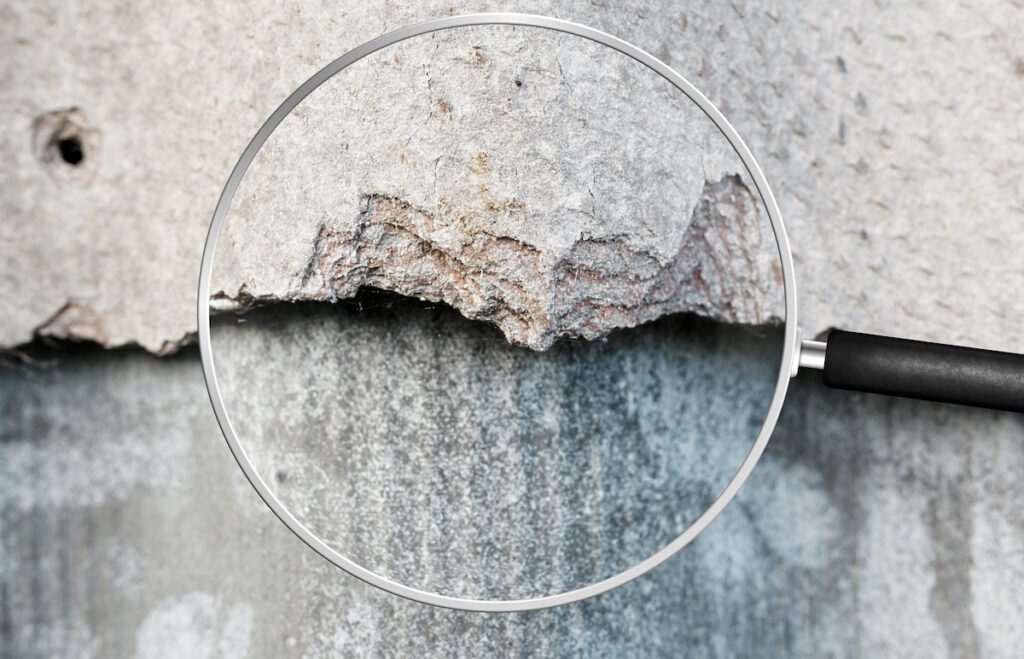
What is it?
Asbestos is a naturally occurring mineral composed of thin, needle-like fibers.
The term asbestos refers to a category of six different fibrous minerals. Asbestos is resistant to heat, electricity and corrosion. This made it widely used in the military, construction and other fields.
A large number of homes and commercial buildings constructed prior to the 1980s were built with asbestos materials. Those products are considered safe as long as they are in good condition. But once ripped, broken, burned, blown or washed away, the products release toxic asbestos fibers into the air.
Breathing in these fibers in the aftermath of a natural disaster can lead to serious health conditions years later. The more someone is exposed to asbestos, the higher their risk of developing asbestos-related diseases such as a cancer called mesothelioma.
How does asbestos cause mesothelioma?

Exposure to asbestos causes mesothelioma when a person inhales or ingests asbestos fibers. Once inside the body, these asbestos fibers get trapped in the mesothelium or very thin tissue that lines certain organs.
The fibers pierce this lining, causing inflammation and damage to the mesothelial cells. Over time, the chronic inflammation and the physical properties of asbestos fibers may lead to DNA damage. Ultimately this can cause the formation of mesothelioma tumors.
How Is Asbestos a Risk During a Natural Disaster?
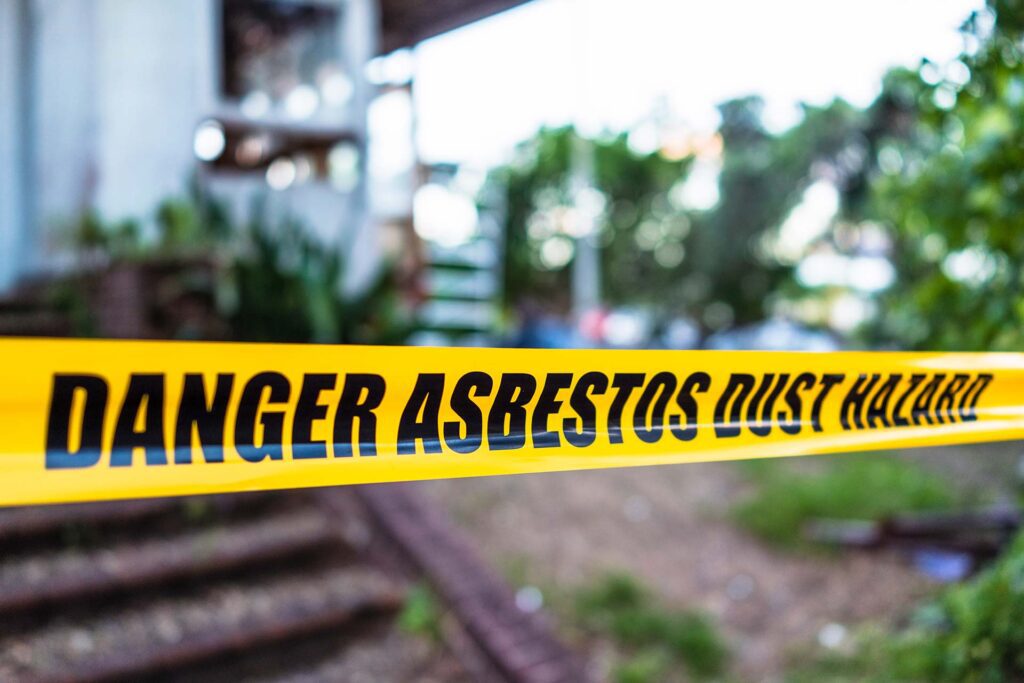
During natural disasters like wildfires or tornadoes, asbestos becomes a significant risk due to its presence in various building materials. Older buildings, homes, and infrastructure contain asbestos-containing materials (ACMs) such as insulation, roofing materials, floor tiles, and cement products. When these structures are damaged or destroyed during a disaster, asbestos fibers can be released into the air in the form of dust and debris.
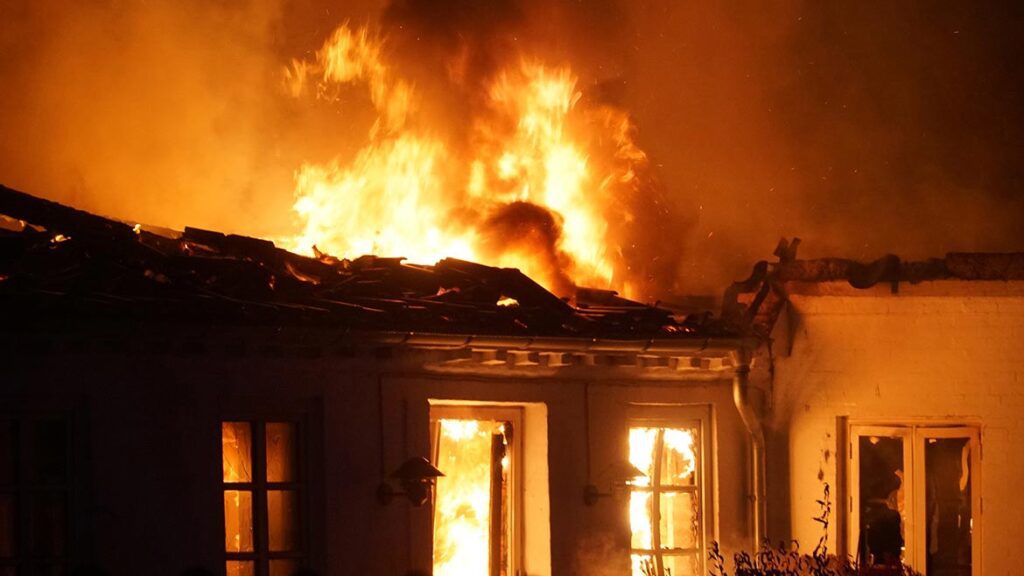
In the case of wildfires, the intense heat can cause buildings with ACMs to burn, releasing asbestos fibers into the smoke and ash that can travel for miles. These microscopic fibers are easily inhaled and can remain suspended in the air for long periods.
It is essential to consider and properly prepare for asbestos exposure prevention when planning for natural disasters and severe weather. Knowing how to keep safe from asbestos after a disaster can help prevent health conditions later in life.
Wildfires and Asbestos Exposure
Wildfires pose a threat for asbestos exposure as they move into cities and residential neighborhoods with structures built before 1980.
When these structures catch fire, asbestos products become damaged and release carcinogenic fibers that become airborne and transportable in smoke.
Asbestos Exposure Prevention Tips for Wildfires
According to Ready.gov, FEMA’s national public service campaign encouraging Americans to plan ahead for disasters, it recommends using an N-95 mask to prevent breathing in airborne particles. But these masks are not designed to filter finer particles such as asbestos fibers.
Only an N-100 or P-100 respirator will properly filter out tiny asbestos fibers that may be mixed with smoke and ash.
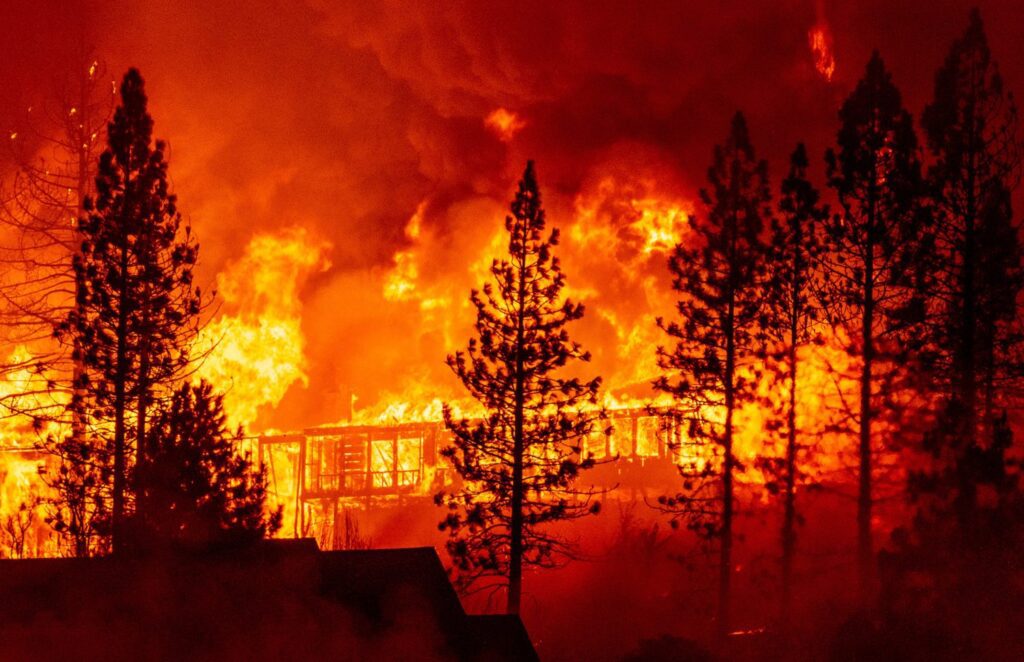
Helpful Tips Before and During a Wildfire
- Have an N-100 or P-100 disposable respirator mask in your emergency supply kit.
- Designate a room that can be closed from outside air, and make sure all doors and windows are firmly shut.
- Have a portable air cleaner or air purifier on hand to keep indoor pollution levels low when smoky conditions exist.
- If you are not ordered to evacuate, stay inside in a safe location where smoke levels are minimal.
Asbestos Exposure Prevention After a Disaster
Different types of natural disasters present a variety of asbestos exposure risks.
Consider these tips to minimize asbestos exposure:
- If materials must be moved, wet them first so that the fibers are less likely to become airborne. In each state, there are regulations that govern the removal and management of asbestos-containing materials after a natural disaster. You can find these requirements by locating the local EPA in your state.
- Use only properly fitted NIOSH-Approved, N-100 or P-100 respirators. Do not use basic paper or fiber dusk masks, handkerchiefs or other, lower-grade air respirators.
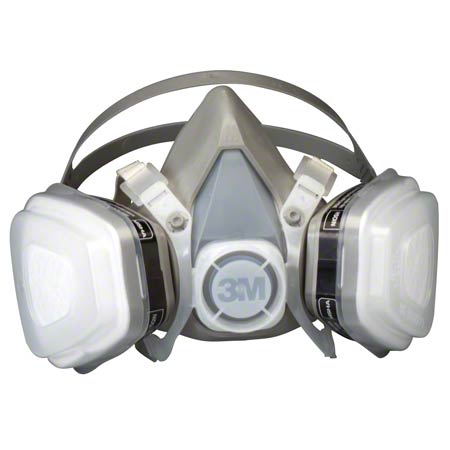
- Double-bag all building debris.
- Enclose the work area with plastic sheeting and duct tape to minimize dust.
- Only disturb construction materials that must be removed and minimize any excess breakage to prevent the release of dust and fibers into the air.
- Be sure to thoroughly shower and wash once you have completed debris removal to remove any dust and fibers that could become airborne.
- It is recommended to properly dispose of your clothes or wear disposable coveralls when handling asbestos materials. Washing clothes covered in asbestos dust or tiny fibers interwoven into the fabric can lead to exposure for you and your family members.
Emergency Planning
Your Emergency Plan Should Include:
- Where you plan to shelter
- Your best evacuation route
- How your family plans to communicate
- How you’ll care for pets
- How you’ll access emergency updates, alerts and warnings
- Where safety supplies, such as face masks, gloves and goggles, are stored
- Contact information for your oncologist, veterinary office, local police, fire department and utility companies
- Email and phone numbers of your family members, neighbors and other important personal contacts
In addition to sharing digital copies of your plan with your family, make sure each person has a printed copy. You may want to share your plan with extended family members and trusted neighbors in case you need to rely on them during or after a disaster.
Seek help from a qualified asbestos abatement company if you believe large quantities of asbestos materials were damaged during a fire. These professionals are trained in decontamination and safety procedures.
For more information and resources, please visit Asbestos.com
Source: Asbestos.com